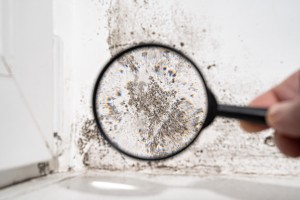
Around this time every year it’s the same problem – windows stream and mould grows. So, is there anything we can do to prevent it?
Condensation on windows and mould growth on ceilings, walls, curtains and furnishings, are indications of high indoor moisture levels. The good news is that high indoor moisture levels can be mitigated to help reduce the incidence of condensation and mould growth.
But first, it is useful to have some understanding of internal moisture, that is, how air, water vapour, and air temperature interact. This first blog of two will explain some of the science behind internal moisture levels.
All air consists of dry air and water vapour. New Zealand, being situated in the middle of a vast ocean, tends to have a relatively high outdoor air moisture content all the time. Water vapour in the air is described as humidity. The amount of water vapour that can be contained in a certain volume of air depends on the temperature of the air, and warm air can hold more water vapour than cold air.
Relative humidity (RH) is the percentage of water vapour in air relative to the total amount of water vapour air is able to hold at a specific temperature. When air cannot hold any more water vapour at a given temperature, the RH is 100% and the air is said to be saturated. At this point, if the air temperature falls, water vapour will condense out as water droplets. This is what we see occurring on windows during the night.
Some materials, particularly porous materials, when in contact with water vapour can capture and hold water molecules. These materials are referred to as hygroscopic which means they have a tendency to absorb moisture. As the RH increases, the amount of moisture a hygroscopic material can absorb also increases. The materials that we use to build houses, such as timber and plasterboard, and the materials that we use to furnish houses, such as carpets, curtains and furniture, all tend to be hygroscopic. And when these materials absorb moisture and stay damp, they provide the conditions for mould to grow.
In the next part of this blog topic, I will explain how understanding how air, water vapour, and air temperature interact can help us to manage condensation and mould growth in our homes.
